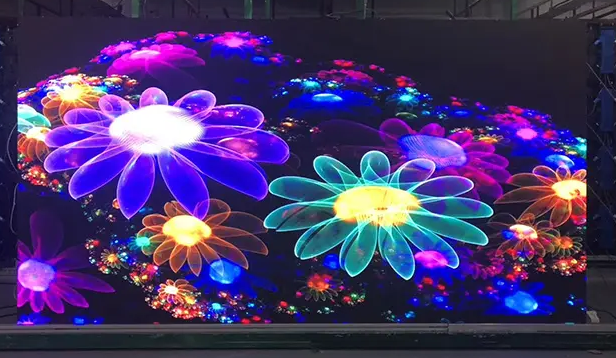The global LED video wall market is entering a new stage of technological maturity and diversified demand. According to TrendForce’s 2026 Global LED Video Wall Market Outlook and Price Cost Analysis, the market value is projected to reach USD 8.105 billion by 2026. This resurgence will be driven by major sporting events like the 2026 FIFA World Cup and the World Baseball Classic, as well as increasing adoption in corporate, education, cinema, and home entertainment sectors.

While innovation remains central to growth, the next phase of the industry will be defined by refined display quality, cost-effective manufacturing, and deeper integration across consumer and professional applications.
Micro and Mini LED technologies continue to reshape the visual landscape, bringing ultra-fine pixel pitches and exceptional HDR performance into broader applications.
Micro LED TVs are expected to move beyond luxury consumer electronics and begin penetrating home theaters, exhibitions, corporate meeting rooms, and education markets. Transparent Micro LED displays are also gaining traction in retail, art galleries, and hospitality spaces, where they serve as innovative digital canvases for immersive product storytelling.
On the Mini LED front, the market is forecast to grow 25% in 2025, with P1.2 models becoming mainstream and accounting for more than half of total shipments. As production stabilizes, the Mini LED video wall market could reach USD 2.194 billion by 2029, with a robust CAGR of 28% from 2024 to 2029. These technologies collectively signal the next chapter in fine-pitch LED display performance.
All-in-one LED displays are transforming from niche professional tools into globally sought-after solutions for boardrooms, auditoriums, and premium retail spaces.
TrendForce projects 12,850 units will ship globally in 2025. Leading suppliers in 2024 included CVTE, Unilumin, Samsung, Leyard, and Absen. Mainstream products are expected to revert to a 16:9 aspect ratio, with the 135-inch 2K P1.5 display emerging as the new industry standard.
A new generation of foldable, transport-friendly designs will further reduce total cost of ownership for enterprises. The integration of COB (Chip-on-Board) packaging is improving color uniformity, contrast, and wide viewing angles, prompting adoption from global brands such as Samsung, ViewSonic, Philips, and CVTE. Between 2024 and 2025, COB technology is expected to hold a 25–30% market share.
High-end solutions like 162–163 inch 4K P0.9 displays will also see rising demand in luxury commercial and home theater installations.
Cinema LED displays are reshaping the projection-centric model that has dominated theaters for a century. With China’s supportive policies for LED cinema technology, installations have accelerated, driving a 75% increase in new global setups through 2025.
Common aspect ratios include 1.85:1, 1.90:1, and 2.39:1, while screen lengths range from 4 to 20 meters. Demand for 16-meter and 20-meter screens is particularly strong among new installations.
This expansion underscores a larger trend: cinema owners are prioritizing uniform brightness, deeper contrast, and 3D/HDR compatibility, ensuring a premium experience that traditional projection systems struggle to match.
Virtual production remains a key innovation in film and TV production—but economic constraints are reshaping the market landscape.
In Europe and the U.S., lower entertainment spending has softened demand, while China’s virtual production sector faces slower growth amid tightened investment and reduced consumer spending. Emerging markets such as Thailand, Singapore, Japan, and Australia are developing smaller, more cost-efficient virtual studios.
Manufacturers like Unilumin, Samsung, LG, Sony, BOE, and AOTO are offering tailored virtual production solutions to balance creative ambition with budget limits.
Common display specifications include P2.3 to P2.8 for background walls, P1.2–P1.6 Mini LED for close-up shots, P2–P4 for floors, and P3.9–P6 for ceiling displays. The adoption of Mini LED for virtual sets continues to enhance color accuracy, brightness, and immersive realism.
The rental LED market is benefitting from a global wave of live entertainment, sports, and experiential events that prioritize flexible, high-impact visual environments.
As LED prices continue to fall, rental penetration is rising steadily. TrendForce forecasts the rental LED display market to reach USD 2.244 billion by 2029, growing at an 8% CAGR between 2024 and 2029.
Modern rental LED systems emphasize lightweight structures, quick installation, and easy maintenance, while offering high refresh rates, energy efficiency, and outdoor durability—qualities essential for today’s touring and festival productions.
Outdoor LED displays remain a foundational pillar of the global market, supported by consistent demand from advertising, transportation, and sports sectors.
Fine-pitch outdoor solutions are increasingly seen in street furniture, bus shelters, and digital billboards, integrating 4-in-1 Mini LED, 1010 Flip-Chip, Mini LED (COB), and MiP technologies. Among them, Mini LED (COB) stands out for its high pixel density and excellent visual performance, making it a preferred choice for premium outdoor installations.
As municipalities and advertisers push for energy-efficient and high-brightness outdoor media, technological diversification will remain central to market competition.
The LED video wall industry is evolving into a more integrated ecosystem, where fine-pitch innovation, advanced packaging, and diverse form factors intersect. TrendForce’s analysis tracks 25 major global manufacturers, including Samsung, Unilumin, and Leyard, offering a comprehensive overview of how suppliers are optimizing both business operations and marketing strategies.
As the market transitions from raw growth to sustainable innovation, the key success factors will be cost control, production scalability, and cross-sector collaboration—ensuring that LED video walls continue to light up the world, one pixel at a time.